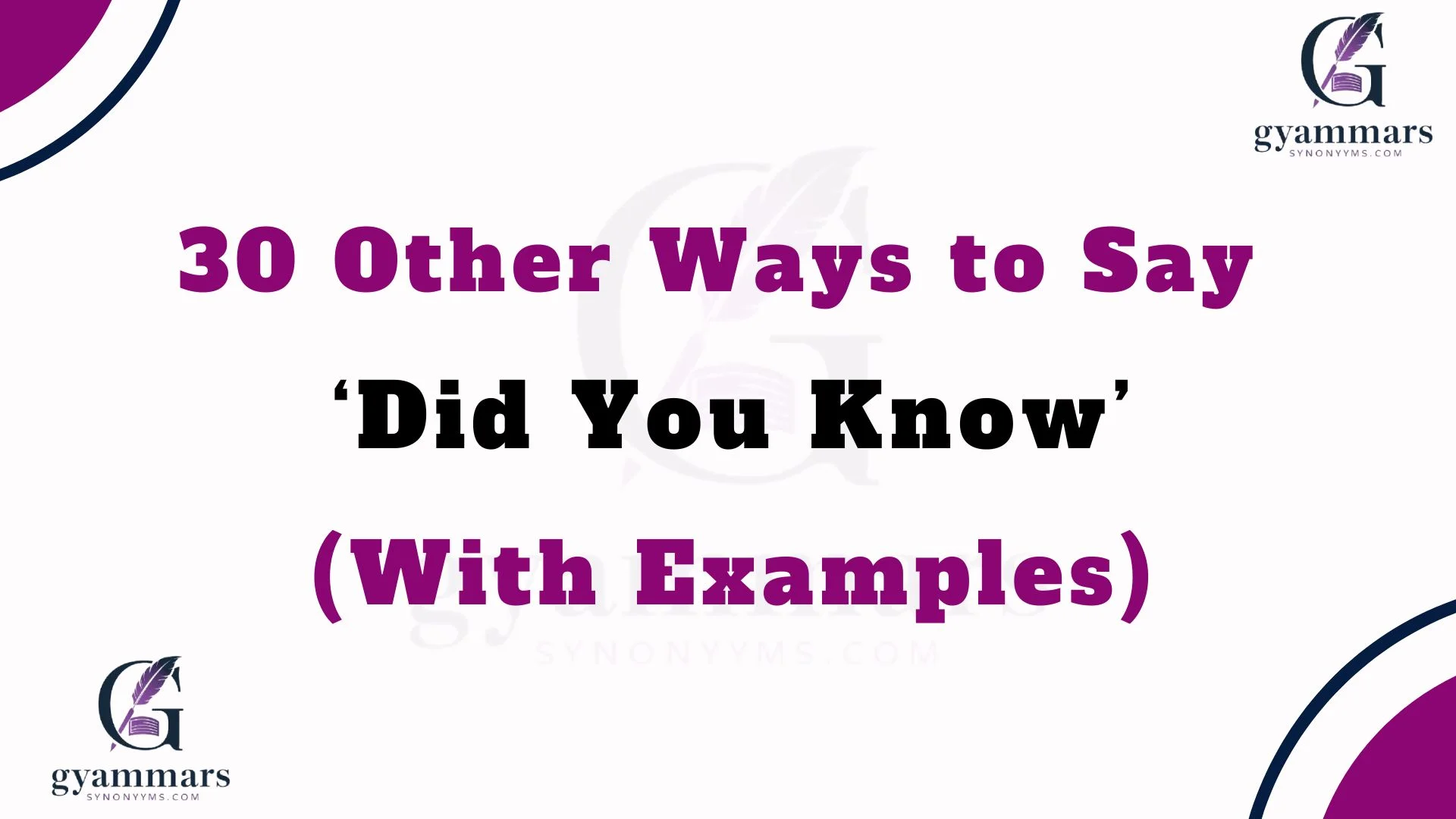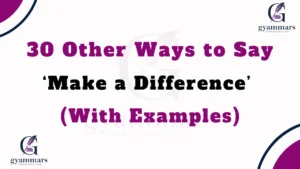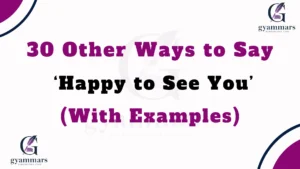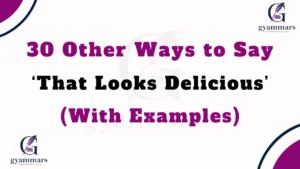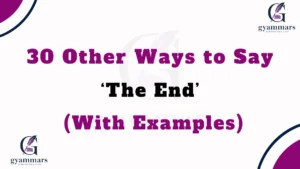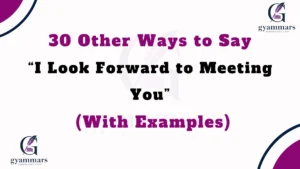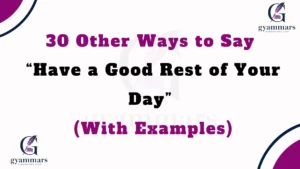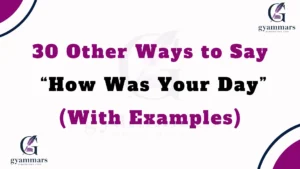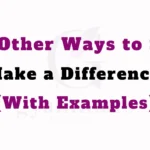Finding the right words matters. A simple phrase like “Did you know” is often used to spark curiosity, share information, or start conversations. But sometimes, you want your message to feel more personal, thoughtful, or professional. That’s where alternatives to “Did you know” can help. Whether you’re writing, teaching, or connecting with friends, using warmer or more engaging phrases makes your words feel genuine and meaningful.
This guide explores 30 alternatives to “Did you know”, complete with definitions, examples, best uses, tones, and extra notes to help you pick the right expression for every situation.
What Does “Did You Know” Mean?
Definition: “Did you know” is a phrase used to introduce new information, facts, or surprising details in conversation or writing.
Detailed Explanation: It’s commonly used to spark curiosity, grab attention, or encourage engagement. Teachers, writers, and speakers often use it to highlight interesting knowledge or share lesser-known facts.
Is It Professional/Polite to Say “Did You Know”?
Answer: Yes, it’s polite and commonly used in both casual and professional settings. However, depending on tone and context, it can sometimes sound a little informal or repetitive. Using alternatives can make your communication more polished, engaging, and appropriate for specific situations.
Pros and Cons of Saying “Did You Know”
Pros:
- Easy to understand.
- Universal attention-grabber.
- Works in casual and educational settings.
Cons:
- Can feel overused.
- May sound too basic in formal or professional writing.
- Lacks emotional warmth if used repeatedly.
Synonyms For ‘Did You Know’
- Have You Heard
- Were You Aware
- Fun Fact
- Did You Notice
- Guess What
- Did You Realize
- It Might Surprise You
- You’ll Be Interested to Know
- Something You May Not Know
- You Might Find This Interesting
- Here’s Something Cool
- I Learned Recently
- Believe It or Not
- Just So You Know
- Here’s a Thought
- Did You Ever Think About
- You’ll Love This
- Can I Share Something With You
- Something Fascinating I Discovered
- Here’s a Fun One
- Let Me Tell You Something Interesting
- Want to Hear Something Surprising
- Little-Known Fact
- A Detail You Might Appreciate
- Something to Keep in Mind
- Here’s an Insight
- Did You Ever Wonder
- What If I Told You
- Here’s the Cool Part
- Let Me Share a Fun Fact With Your
1. Have You Heard
Definition: A way of asking if someone is aware of information.
Detailed Explanation: Softer than “Did you know,” often used in friendly conversation.
Scenario Example: “Have you heard that our city is opening a new library?”
Best Use: Casual talks, friendly exchanges.
Tone: Warm, inviting.
Additional Notes: Adds a conversational touch.
2. Were You Aware
Definition: A formal way of checking someone’s knowledge.
Detailed Explanation: Suitable for professional settings.
Scenario Example: “Were you aware of the policy update from last week?”
Best Use: Professional emails, meetings.
Tone: Respectful, formal.
Additional Notes: Great for serious contexts.
3. Fun Fact
Definition: A playful way to introduce interesting details.
Detailed Explanation: Engages listeners with curiosity.
Scenario Example: “Fun fact, honey never spoils—even after thousands of years.”
Best Use: Presentations, teaching, casual chats.
Tone: Lighthearted, engaging.
Additional Notes: Perfect for kids or social media.
4. Did You Notice
Definition: Draws attention to something specific.
Detailed Explanation: Encourages observation.
Scenario Example: “Did you notice how the sky turned pink tonight?”
Best Use: Personal, descriptive conversations.
Tone: Observational, curious.
Additional Notes: Best for small details.
5. Guess What
Definition: Creates anticipation before sharing.
Detailed Explanation: Excites the listener.
Scenario Example: “Guess what, our team just won the award!”
Best Use: Sharing exciting news.
Tone: Playful, suspenseful.
Additional Notes: Works best informally.
6. Did You Realize
Definition: Highlights awareness of facts.
Detailed Explanation: Often used to emphasize surprising information.
Scenario Example: “Did you realize dolphins sleep with one eye open?”
Best Use: Educational settings, storytelling.
Tone: Informative, curious.
Additional Notes: Slightly formal but friendly.
7. It Might Surprise You
Definition: Prepares the listener for unexpected information.
Detailed Explanation: Builds suspense and curiosity.
Scenario Example: “It might surprise you, but bananas are actually berries.”
Best Use: Teaching, fun fact sharing.
Tone: Surprising, engaging.
Additional Notes: Adds drama to the reveal.
8. You’ll Be Interested to Know
Definition: Suggests that the information is relevant to the listener.
Detailed Explanation: Personalizes the message.
Scenario Example: “You’ll be interested to know we’re adding more features to the app.”
Best Use: Business updates, formal writing.
Tone: Professional yet engaging.
Additional Notes: Works well for targeted audiences.
9. Something You May Not Know
Definition: Introduces new knowledge politely.
Detailed Explanation: Implies respect for the listener’s awareness.
Scenario Example: “Something you may not know: hummingbirds can fly backward.”
Best Use: Teaching, casual talks.
Tone: Respectful, curious.
Additional Notes: Neutral tone, versatile.
10. You Might Find This Interesting
Definition: Suggests curiosity-driven sharing.
Detailed Explanation: Invites interest without pressure.
Scenario Example: “You might find this interesting—coffee was once banned in Mecca.”
Best Use: Presentations, trivia, friendly chats.
Tone: Polite, engaging.
Additional Notes: Excellent for softer introductions.
11. Here’s Something Cool
Definition: A casual, fun introduction.
Detailed Explanation: Works in relaxed settings.
Scenario Example: “Here’s something cool: the Eiffel Tower grows taller in summer.”
Best Use: Social media, storytelling.
Tone: Energetic, informal.
Additional Notes: Appeals to younger audiences.
12. I Learned Recently
Definition: Shares personal discovery.
Detailed Explanation: Makes the message relatable.
Scenario Example: “I learned recently that cats can’t taste sweetness.”
Best Use: Conversations, teaching moments.
Tone: Humble, curious.
Additional Notes: Builds connection.
13. Believe It or Not
Definition: Emphasizes surprising or unusual facts.
Detailed Explanation: Creates shock value.
Scenario Example: “Believe it or not, octopuses have three hearts.”
Best Use: Trivia, storytelling.
Tone: Playful, dramatic.
Additional Notes: Ideal for amazing facts.
14. Just So You Know
Definition: Shares useful or important info.
Detailed Explanation: Often practical.
Scenario Example: “Just so you know, the meeting has been moved to 3 PM.”
Best Use: Reminders, casual updates.
Tone: Friendly, helpful.
Additional Notes: Neutral and versatile.
15. Here’s a Thought
Definition: Introduces an idea or fact gently.
Detailed Explanation: Encourages reflection.
Scenario Example: “Here’s a thought: what if we try eco-friendly packaging?”
Best Use: Discussions, brainstorming.
Tone: Reflective, conversational.
Additional Notes: Good for group talks.
16. Did You Ever Think About
Definition: Invites the listener to reflect.
Detailed Explanation: Useful for philosophical or detailed sharing.
Scenario Example: “Did you ever think about how trees communicate underground?”
Best Use: Conversations, storytelling.
Tone: Curious, reflective.
Additional Notes: Sparks deeper thought.
17. You’ll Love This
Definition: Creates excitement.
Detailed Explanation: Suggests something enjoyable ahead.
Scenario Example: “You’ll love this—our bakery has a new chocolate flavor.”
Best Use: Sales, sharing exciting info.
Tone: Enthusiastic, warm.
Additional Notes: Persuasive in marketing.
18. Can I Share Something With You
Definition: A respectful, personal way to introduce facts.
Detailed Explanation: Creates connection.
Scenario Example: “Can I share something with you? Butterflies taste with their feet.”
Best Use: Personal talks, teaching.
Tone: Gentle, inviting.
Additional Notes: Builds closeness.
Also Read This : 30 Other Ways to Say “Rest in Peace” (With Examples)
19. Something Fascinating I Discovered
Definition: Shares new knowledge as a personal find.
Detailed Explanation: Adds authenticity.
Scenario Example: “Something fascinating I discovered—sharks existed before trees.”
Best Use: Social sharing, conversations.
Tone: Enthusiastic, curious.
Additional Notes: Inspires wonder.
20. Here’s a Fun One
Definition: Prepares the listener for a light fact.
Detailed Explanation: Keeps tone playful.
Scenario Example: “Here’s a fun one: sloths can hold their breath longer than dolphins.”
Best Use: Trivia, icebreakers.
Tone: Cheerful, informal.
Additional Notes: Engages quickly.
21. Let Me Tell You Something Interesting
Definition: Direct introduction to a fact.
Detailed Explanation: Clear and conversational.
Scenario Example: “Let me tell you something interesting—kangaroos can’t walk backward.”
Best Use: Friendly talks.
Tone: Engaging, casual.
Additional Notes: Simple and approachable.
22. Want to Hear Something Surprising
Definition: Creates curiosity before revealing.
Detailed Explanation: Great for attention-grabbing.
Scenario Example: “Want to hear something surprising? Crocodiles can’t stick out their tongues.”
Best Use: Conversations, trivia.
Tone: Curious, playful.
Additional Notes: Builds suspense.
23. Little-Known Fact
Definition: Introduces rare knowledge.
Detailed Explanation: Makes the information feel exclusive.
Scenario Example: “Here’s a little-known fact—bananas glow under UV light.”
Best Use: Articles, trivia, teaching.
Tone: Informative, engaging.
Additional Notes: Works well in writing.
24. A Detail You Might Appreciate
Definition: Shares something thoughtful or relevant.
Detailed Explanation: Adds personal touch.
Scenario Example: “A detail you might appreciate: our software auto-saves every 5 seconds.”
Best Use: Professional talks, updates.
Tone: Respectful, considerate.
Additional Notes: Polite alternative.
25. Something to Keep in Mind
Definition: A reminder or tip.
Detailed Explanation: Often practical.
Scenario Example: “Something to keep in mind—the park closes early today.”
Best Use: Helpful reminders.
Tone: Caring, informative.
Additional Notes: Subtle guidance.
26. Here’s an Insight
Definition: Offers a deeper perspective.
Detailed Explanation: Often used in professional or reflective contexts.
Scenario Example: “Here’s an insight—customers prefer shorter forms.”
Best Use: Business, teaching.
Tone: Professional, thoughtful.
Additional Notes: Great for analysis.
27. Did You Ever Wonder
Definition: Invites curiosity or imagination.
Detailed Explanation: Often opens discussion.
Scenario Example: “Did you ever wonder why flamingos are pink?”
Best Use: Teaching, storytelling.
Tone: Reflective, curious.
Additional Notes: Sparks creative thought.
28. What If I Told You
Definition: Creates suspense before revealing info.
Detailed Explanation: Suggests surprise or twist.
Scenario Example: “What if I told you turtles can breathe through their butts?”
Best Use: Trivia, conversations.
Tone: Dramatic, playful.
Additional Notes: Works well in informal chats.
29. Here’s the Cool Part
Definition: Highlights the most interesting detail.
Detailed Explanation: Focuses attention on fun.
Scenario Example: “Here’s the cool part—the museum has free entry every Sunday.”
Best Use: Storytelling, casual talks.
Tone: Excited, informal.
Additional Notes: Makes info fun.
30. Let Me Share a Fun Fact With You
Definition: A gentle, friendly way to introduce info.
Detailed Explanation: Combines politeness and curiosity.
Scenario Example: “Let me share a fun fact with you—sharks existed before trees.”
Best Use: Everyday conversations, social media.
Tone: Warm, approachable.
Additional Notes: Engaging for all ages.
Conclusion
Choosing the right words matters more than you think. While “Did you know” works fine, switching it up with engaging alternatives can make your conversations, presentations, and writing feel warmer, more personal, or more professional. From casual phrases like “Guess what” to polished ones like “You’ll be interested to know”, you now have 30 ways to make your communication stand out.
